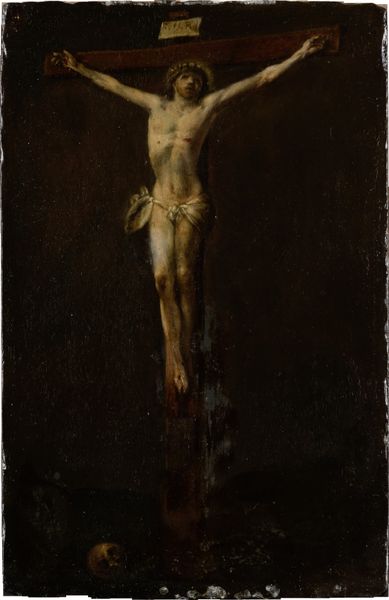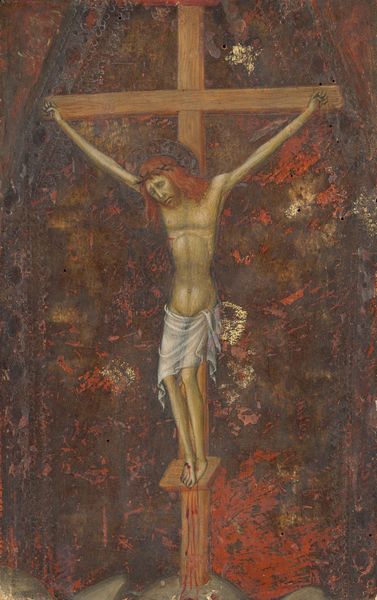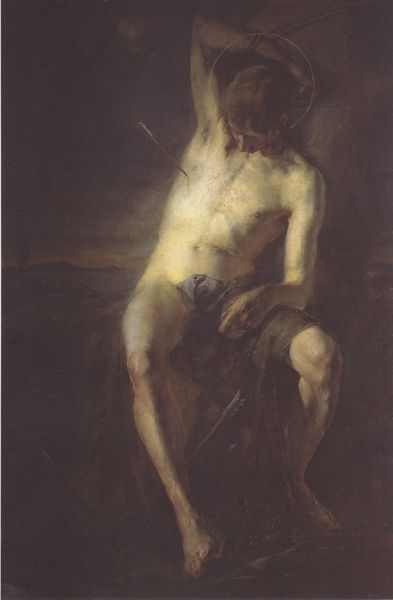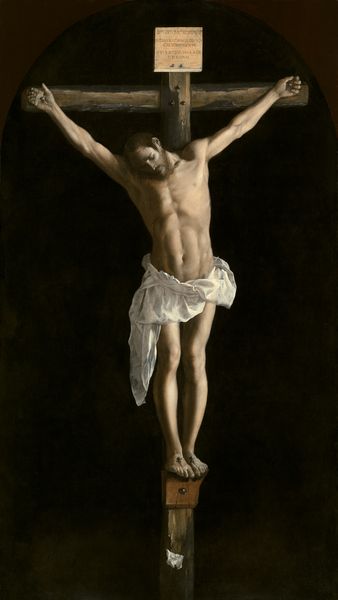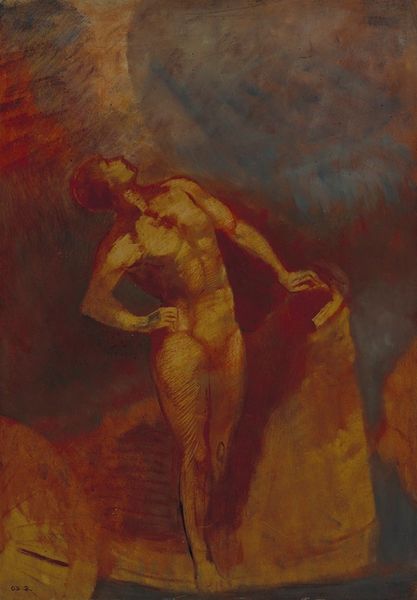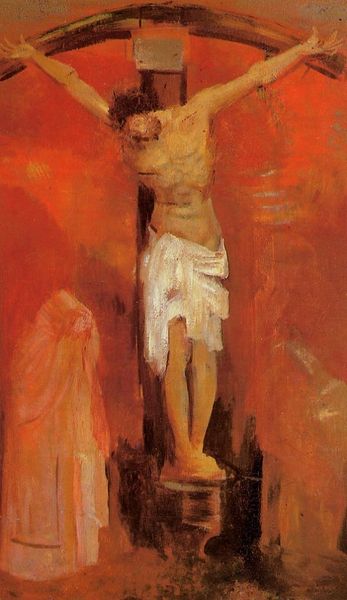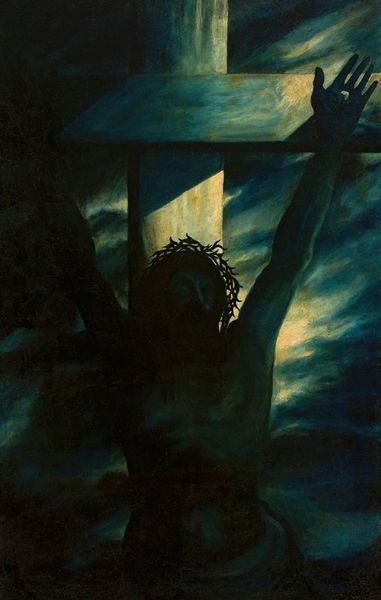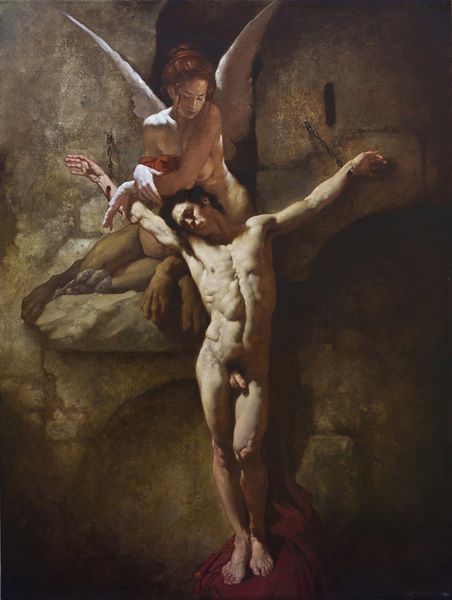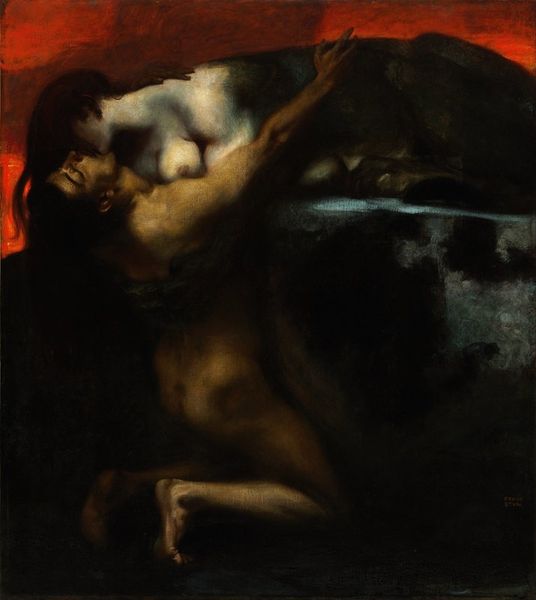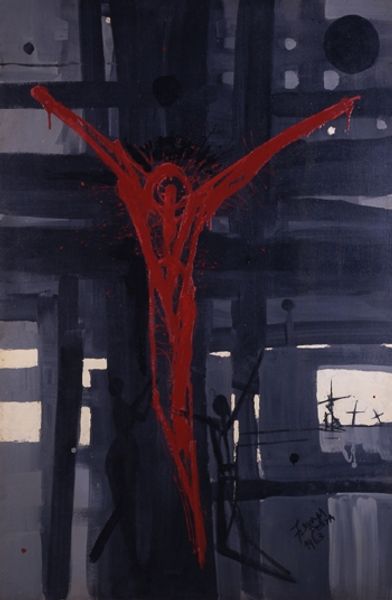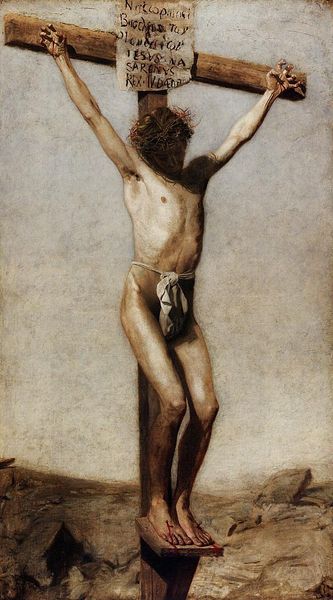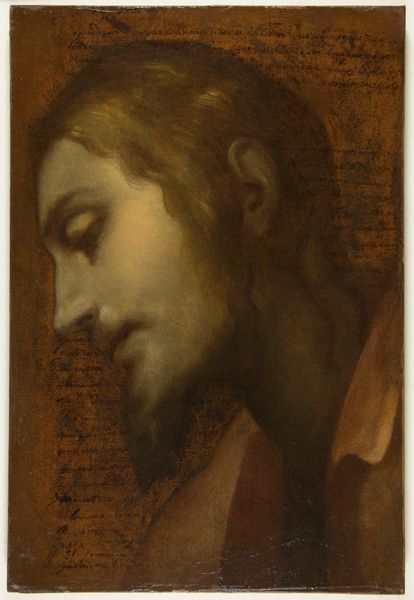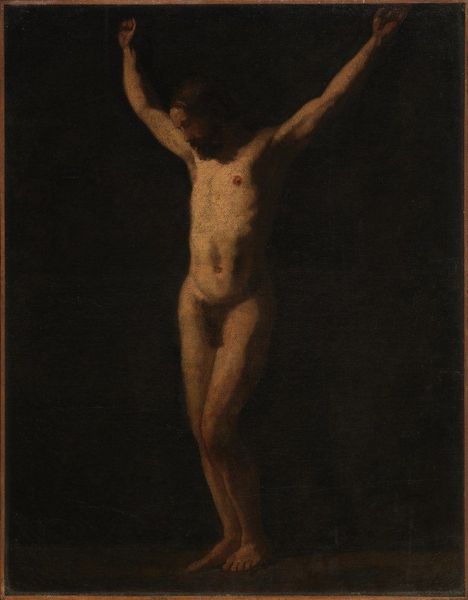
Copyright: Public domain
Thomas Eakins created this "Sketch for the Crucifixion" using oil paint on canvas. The loose brushwork and muted palette serve to heighten the emotional intensity of the scene, while the physical application of paint becomes a language in and of itself. Eakins was deeply committed to realism, which in his time was seen as a challenge to older academic traditions. The materiality of oil paint – its capacity for layering, blending, and expressive mark-making – allowed Eakins to capture the weight and strain of the figure. You can see the artist’s engagement with human anatomy, and his desire to depict the body with accuracy. He brings a kind of scientific, almost clinical, observation to bear on religious subject matter. In doing so, Eakins was pushing the boundaries of what was considered acceptable subject matter for art, and raising questions about the relationship between faith, reason, and representation. By focusing on the process of making and the inherent qualities of his chosen materials, Eakins elevates the status of craft, and imbues his work with a social significance that transcends traditional artistic categories.
Comments
No comments
Be the first to comment and join the conversation on the ultimate creative platform.
